
|
|
Reasons for ExtinctionAs the world’s population increases rapidly, humans are using more and more resources from the natural environment. Human activities including the destruction of wild habitats, the introduction of invasive species, climate change, hunting, and illegal trafficking have worsened the problem of animal extinction. First of all, to meet the demands of human beings, the consumed rates of natural resources have exceeded the rates of natural exhaustion. According to the research from the Global Footprint Network, the world needs 1.75 planets at its disposal to meet its demands. Moreover, from past to present, the action of artificially, intentionally, or accidentally introducing nonindigenous species into an ecosystem is another primary reason for animal extinction. Invasive alien species adapt to the new environment and displace the native species. In Europe, the United Nations stated that one-third of the endangered species is because of this reason. Furthermore, for the sake of personal gain, hunting, and illegal trafficking appear in the global market. The black market annually generates a hefty sum of $5 to $20 billion by holding illegal and unethical business trades on rare animals. Last but not least, rising sea levels and global temperature have brought negative effects on biodiversity. According to the WWF, half of the plants and animals in naturally richest areas could face local extinction by the end of the 21st century owing to climate change. As the study from UEA, JCA, and WWF showed, even controlling the temperature within the Paris Climate Agreement 2°C limit, 25 percent of the species in those places could disappear. In addition, everyone knows that more than 70 percent of the earth’s surface is covered with water, evidently, rising sea levels affect far and wide. The experts from the IPCC have estimated that the melting of the poles injected more than 430 gigatonnes of fresh water into the oceans annually, hence the sea level rises over 1.2 millimeters per year. Thus, this is posing significant impacts on habitats in coastal areas and islands by exposing them to floods, storm surges, etc. |
|
Since the Formosan rock macaques are considered semi-terrestrial animals as they spend their waking hours both on trees and on the ground. They possess great agility and are skilled climbers and leapers; although most of the time they move around on all fours. Historical records from the 19th century depict these macaques swiftly traversing inaccessible rocks and cliffs along Taiwan's coastlines. However, due to increased human activity, they have been forced to seek refuge in the more mountainous areas inland. These adaptable creatures typically inhabit broadleaf evergreen forests, but they can also be found in less ideal habitats such as mixed broadleaf-coniferous forests, coniferous forests, and bamboo forests. In some cases, they have even managed to thrive in secondary-growth forests and small patches of remaining forest. A Formosan rock macaque is Taiwan's only wild primate species (Macaca cyclopis). Throughout Taiwan, Formosan rock macaques are widely distributed in a variety of woodlands. It can be found from the flatland to an altitude of 3,600 meters, but it is more common in broad-leaved forests at an altitude of 500 to 1,500 meters. Formosan rock macaques live in groups and are diurnal animals. There are usually more than 20 to 30 monkeys in the group. The number of Formosan rock macaques on the island is estimated to be about 10,000 based on survey results over the past three years. The survey estimates the island's Formosan rock macaque population at 250,000 based on an average of 25 monkeys. Despite being hunted and sold abroad as experimental subjects in the past, the Formosan rock macaque still lives today. As far back as 1978, it was on the list of protected wild animals. In spite of that, macaques are on the rise after thirty years. |
|
As of 2018, the Forest Service downgraded the Formosan rock macaque to a general wild animal. There are, however, very loose regulations for the protection of general wild animals in the current wildlife conservation law. In the aftermath of the Formosan rock macaque being downgraded to the general category, human-monkey conflicts skyrocketed. The Formosan rock macaque was thought to have gone "conservation category" and could now be hunted. In many cases, raising and hunting macaques is justified by the claim that they are harming farming. Previously, people could be warned against feeding macaques on the grounds that they were harassing wild animals. Now, many improper feeding behaviors are not punishable. Conflicts between humans and monkeys or improper treatment of wild animals are worse than that.
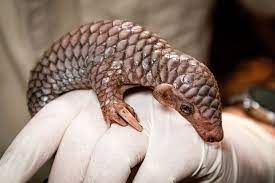
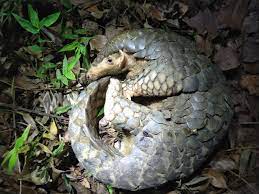
|
The Formosan pangolin is indigenous to Taiwan and can be observed in various ecosystems on the island. It predominantly resides in forests, encompassing both subtropical and tropical varieties. It has been recorded in both lowland regions and mountainous terrains, with its habitat spanning from sea level up to an elevation of 2,500 meters. Additionally, these creatures can also be found within agricultural landscapes as well as grasslands and shrublands. Displaying nocturnal behavior patterns, they create burrows or dens within the soil or seek refuge under fallen trees or among rocks for shelter and protection. Furthermore, it typically occupies caves that offer advantageous characteristics such as steep slopes for easy access. These caves exhibit minimal obstructions while possessing effective drainage systems for optimal living conditions. With eight species of pangolins spread across Asia and Africa, the Formosan pangolin, a subspecies of the Chinese pangolin, is native to Taiwan. This mammal is distinguished by its full-body coverage in scales, measuring between 75 to 95 centimeters in length and weighing 3 to 6.5 kilograms, showcasing nature's diversity. The Formosan pangolin typically leads a solitary lifestyle, seeking refuge in caves except during the mating season. Its diet mainly comprises termites, complemented by ants, larvae, bees, wasps, and other insects. Their voracious appetite allows their stomachs to hold up to 500 grams of termites. These pangolins predominantly inhabit the mid to high-latitude mountain regions, favoring caves with accessible steep slopes, ensuring minimal obstructions and adequate drainage. |

Unfortunately, the accurate Formosan pangolin population count remains unknown. Research from TRAFFIC reveals that over the past decade, human poaching has claimed the lives of more than one million pangolins globally, leading to their critically endangered status. Between the 1950s and 1970s, Taiwan experienced a peak in pangolin leather processing, resulting in the annual loss of approximately 60,000 Formosan pangolins. The period when pangolins were gradually disappearing has also signaled the dawn of global conservation awareness. In 1975, the formal adoption of the "Convention on International Trade in Endangered Species of Wild Fauna and Flora" (CITES) mandated that member countries control the import and export of wild animals. Subsequently, the United States, Japan, and Thailand joined CITES, imposing substantial restrictions on Taiwan's pangolin exports and their sources. In 1989, the implementation of the "Wildlife Conservation Act" extended protection to pangolins, effectively combatting wildlife smuggling and bolstering Taiwan's reputation. The true heroes in this conservation effort are the frontline residents who serve as both law enforcers and "foster parents" for these endangered creatures, sparking pangolin conservation networks across various regions.
|
Formosan serow can be found in the mountainous terrain, with steep slopes of bare rocks and gravel cliffs, altitudes ranging from 200 - 3800 meters above sea level. They also live in dense forests, including broadleaf, coniferous and mixed forests. Formosan serows are adaptable to various forest types, but they seem to prefer areas with abundant vegetation, rocky cliffs, and areas that provide them with natural cover and protection. They are sometimes spotted on top of Nanhu Mountain, Hsuehshan, Yushan, and Xiuguluan Mountain. They also live in the Taroko National Park. The Formosan serow is a unique Taiwanese species, characterized by its physical attributes. They are medium-sized, with a length ranging from 80 to 114 cm and a shoulder height of about 50-60 cm. These creatures are recognized for their relatively short, smooth coat, dark brown body, and distinct light-colored bib on the chin and throat. Both males and females possess sharply pointed, slightly backward-curving horns. They reach sexual maturity at 16 months, with a 210-day gestation period. Breeding occurs between September and December, and young are born in March, and capable of walking shortly after birth. Formosan serow are diurnal herbivores, consuming leaves, shoots, and grass. 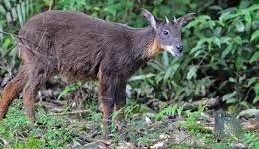
|
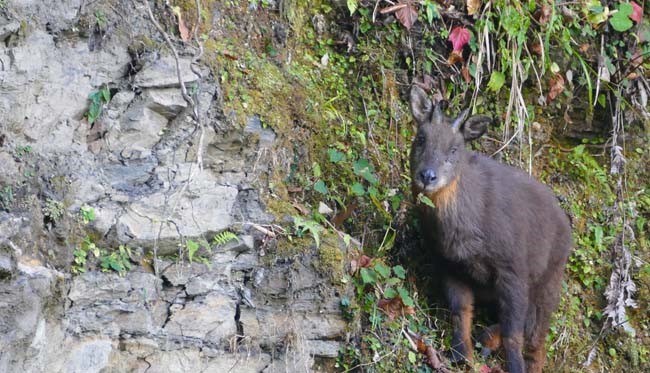
They are adaptable, inhabiting mountainous regions, including forests, grasslands, and cliffs in eastern Taiwan. These creatures exhibit remarkable physical abilities, sprinting at up to 20 km/h and leaping 2 meters high. In terms of behavior, they are most active during sunrise and sunset. Evidence suggests territorial behavior, with tree-marking using horns and scent-marking. |
|
|
About Leopard CatLeopard cats can be found in various habitats, ranging from lowlands to high elevations exceeding 3,000 meters above sea level in the Himalayas. They are typically considered to be ground-dwelling animals. These cats have a wide distribution and can be seen in different types of environments, including tropical lowland rainforests and coniferous forests in the Himalayas or Amur region. It is worth noting that leopard cats are not limited to their native habitats but have also been observed in logged forests, rubber estates, and oil palm plantations. There is a slight difference in size between a domestic cat and the Prionailurus bengalensis, also known as Leopard cat. Leopard-like spots cover its body, two white vertical bands sit on its forehead, dark brown spots are spread throughout its body, and there are black and white patches behind its ears. Clearly different from domestic cats. There are mainly leopard cats in Miaoli, Taichung, and Nantou, which are mountainous areas with low altitude. Deep mountains below 500 meters above sea level have a higher density and are the main habitats for these animals. Throughout Asia, including Taiwan, the Philippines, mainland China, and India, the Leopard cat is the most widely distributed species of cat. Located in low-altitude mountains and hills in central Taiwan, leopard cats are nocturnal wild animals. It is mainly found in the shallow mountainous regions of Miaoli, Nantou, and Taichung in central Taiwan. There may be several factors contributing to Leopard cats' survival crisis in Taiwan:
|
The Leopard cat population in Taiwan is probably still declining at the present time. It is only through changing the public's perceptions and behavior that they will be able to survive. Current Leopard cat populations are mostly found in Miaoli County. In spite of this, Leopard cats are retreating to the southwest in Miaoli according to research conducted by Pingtung University of Science and Technology.
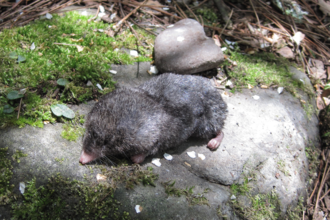
Chinese mole shrews are typically found in forested environments, including both primary and secondary forests. They are adapted to live in areas with dense undergrowth and leaf litter. And these shrews inhabit a wide range of elevations, from lowlands to montane regions. They can be found from sea level up to higher elevations, usually not more than 3,000 meters.
The Anourosorex yamashinai Kuroda, also known as the short-tailed mongoose or simply short-tail, is a tiny mammal native to Madagascar. Unfortunately, this creature faces a major threat of extinction due to habitat loss, hunting, and last but not least, the introduction of invasive species by humans. The forests of Madagascar, the natural habitat of the short-tailed lemur are undergoing extensive deforestation and development, leading to the mass reduction of its already limited living space. Like many other animals we have written about, human activities continuously worsen the situation. Some individuals capture them as pets, and the illegal wildlife trade exacerbates the decline in their numbers. Simultaneously, introduced invasive species, such as cats and rats, become natural predators, further threatening the lemur population.
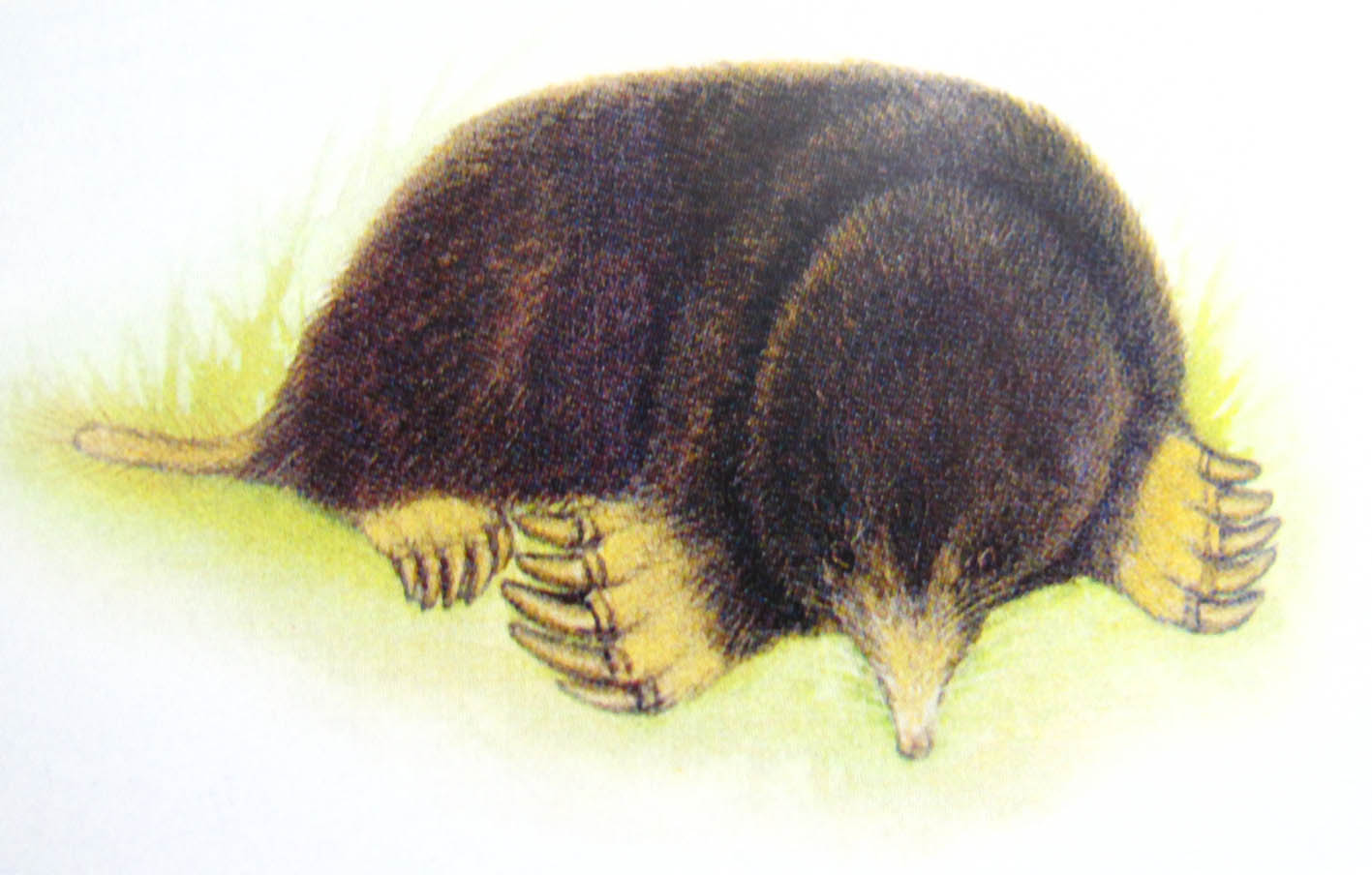
Out of the many unfortunates, we have the Durrell Wildlife Conservation Trust, an organization funded by naturalist and author Gerald Durrell. This organization aims to restore species from extinction through conservation efforts. In action, they operate a breeding program that focuses on breeding endangered species, including those from Madagascar. To precisely and quickly tackle and save their target, Durrell Wildlife Conservation works closely with local communities and governments to address the root causes of endangerment, such as habitat loss and unsustainable human activities. This organization has encouraged our team with its diversity to achieve its ultimate goal, especially for those who are interested in studying biological technology in the future. We also learned for a fact that cooperation is essential for us to carry out our plan, motivating us to engage in a bigger community as well as augmenting our impact.